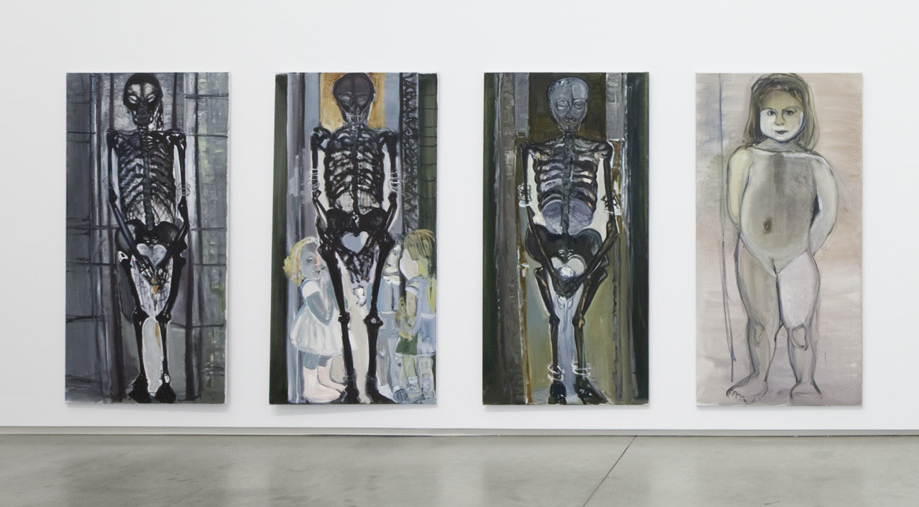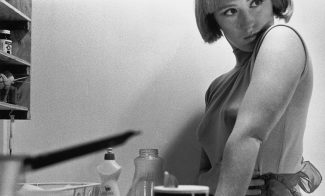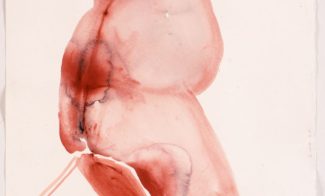The work of Marlene Dumas explores the thematic relationships between parenthood, sexuality, and death. Using a wide range of photographic source material, from her own Polaroids to newspaper images and pornography, Dumas creates paintings and drawings that are focused largely on the human body or face. She considers her source images to be political in their contemporaneity, showing the psychological realities of the era in which they were taken. She works in the tradition of portraiture, but she subordinates the aspect of individual appearance to the sitter’s mental and emotional state.
The Messengers reveals the fragile cycles of life in a four-panel painting that depicts three skeletons alongside a young child. While the anatomy is not detailed, Dumas creates a compressed intensity by scaling her figures to the height of the narrow canvasses and installing them close to the floor so they share our viewing space. Dumas made this painting when she was a new parent: the figure to the right is her daughter Helena. In contrast to the three small children sheepishly crowding around one of the skeletons, Helena turns her larger-than-life gaze directly toward us. Images of pregnant women and children recur in Dumas’s work, and Helena is a frequent subject. The Messengers is typical of Dumas’s way of suggesting that motherhood and childhood are not as distant from issues of mortality as we might think. The size and postures of the skeletons and Helena are the same, and the skeleton beside her holds a small figure near its pubis as though it had just given birth; the association emphasizes the inexorability of the cycle of life and death.
The striking and monumental The Messengers strengthens the representation of Dumas’s work in the ICA/Boston collection, which also includes her German Witch, 2000.
2014.16.1–4


